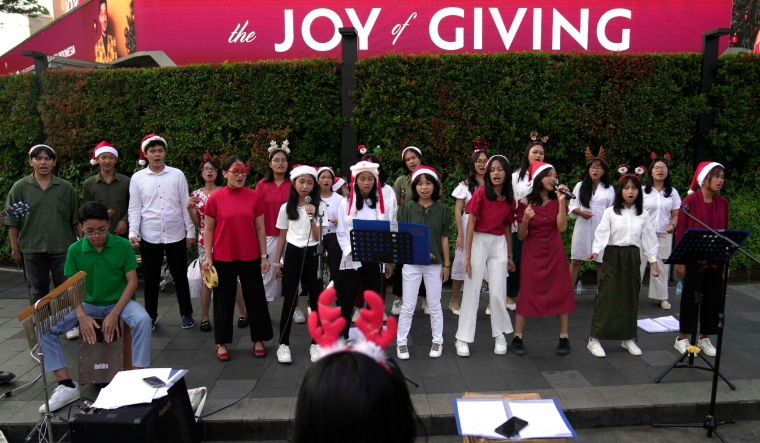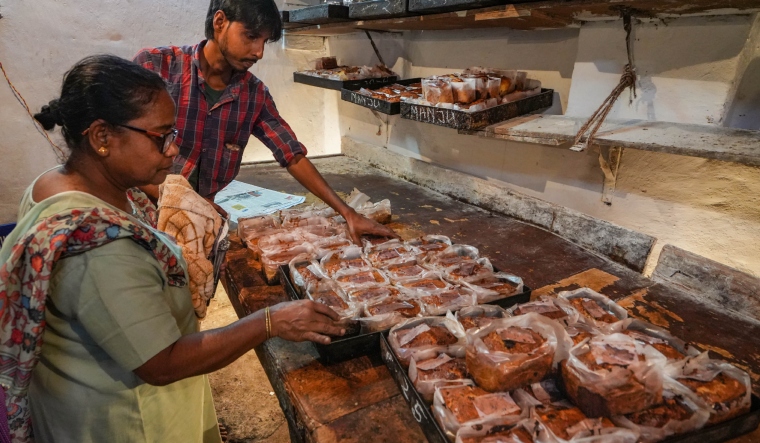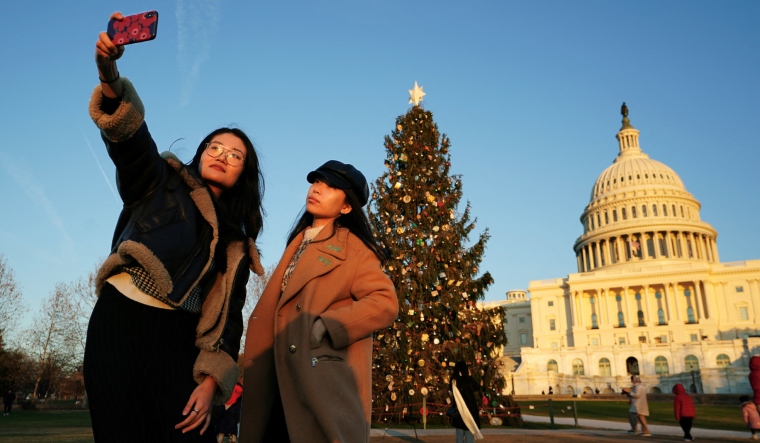What fun is Christmas sans the delightful customs and traditions... Christmas trees, lights, Secret Santa games, singing Christmas carols out loud, baking cakes and making gingerbread make the celebration complete. It is indeed the coming together of these little traditions that bring joy.
Here are some interesting facts that you should know about the history of Christmas trees, carols and cakes -- three unavoidable ingredients of the celebrations in India like anywhere else across the world.
Origin of Christmas Trees
The first recorded instance of a Christmas tree dates back to around the 15th and 16th centuries in Germany. It is believed to have become a Germanic custom as the trees started to show up in households across the European country.
The Christmas tree remained a royal custom under Queen Charlotte of Great Britain and Ireland but it was strengthened in 1840, by her granddaughter Queen Victoria after her marriage to her German cousin, Prince Albert. This resulted in the spread of Christmas trees worldwide.
However, most Americans rejected this idea first because they believed it was part of pagan belief. The surge in immigration from Germany gradually brought a change as the US witnessed a wider German cultural influence.
German settlements, especially in Pennsylvania started to decorate community trees in the 18th century. In 1848, they even printed illustrations of King Albert and Queen Victoria around the Christmas trees.
In 1850, the Christmas tree trade became profitable in the US. It became a tradition in houses big and small and it goes on to this day.
Origin of Christmas carols
Carols were not always about Christmas. The history of caroling commenced in medieval England. The term 'carol' referred to songs with a certain form; those with a burden (refrain) and verses (stanzas). The burden was repeated after each verse. The social context of these early carols was sacred and secular.
 Members of a choir sing Christmas carols at the main business district in Jakarta, Indonesia | AP
Members of a choir sing Christmas carols at the main business district in Jakarta, Indonesia | AP
Most people believed that the English carol was connected to the French carol, a type of monophonic dance song with choreography which was popular in the mid-12th to 14th century. These medieval carols were musically simple.
By the 15th century, carols became polyphonic (multiple melodic lines are sung or played at once and each verse could be sung to different music) and covered a wider range of topics from demonstrating religious devotion to declaring the ills of the society and even celebratory drinking songs.
The popularity of carols declined through reformation and they were not revived until the 19th century. By then, carols lost their connection to medieval counterparts and became similar to strophic hymns with Christmas texts although many still had refrains.
The folk music movement in the 20th century inspired music publishers to collect old carols and the Oxford Book of Carols was published. It included various works such as medieval carols and Christmas songs from different countries and therefore, the term carol began to mean Christmas songs.
Origin of Christmas cakes
The plum cake which we eat today was not the original form of Christmas cake. It started in the form of “plum porridge” when fasting for weeks leading up to Christmas was a widespread ritual at that time.
Over time, they started adding more ingredients such as fruits, oats and honey so that it would represent something like plum pudding. By the 16th century, oats got replaced by eggs, flour and spices. Later, rich families started to decorate them with icing, and marzipan and even began to bake them -- the first known predecessor of the modern-day Christmas cake!
 A customer checks her cakes prepared at a bakery ahead of the Christmas celebrations in Kolkata | PTI
A customer checks her cakes prepared at a bakery ahead of the Christmas celebrations in Kolkata | PTI
The Christmas cake was known as the “Twelfth cake” back then because they were served on the Twelfth Night, ending the twelve days of Christmas on January 5th. However, they stopped celebrating the Twelfth Night as part of the Industrial Revolution as people had to work immediately after Christmas day. That’s how the Twelfth cake became Christmas cake.
Other sources say that the Twelfth-day tradition was officially banned by Queen Victoria of the United Kingdom of Great Britain and Ireland in the 19th century as she believed it was not a Christian festival. So, they reinvented the Twelfth Night cake by decorating the cakes for Christmas celebrations and the modern-day Christmas cake was born.



